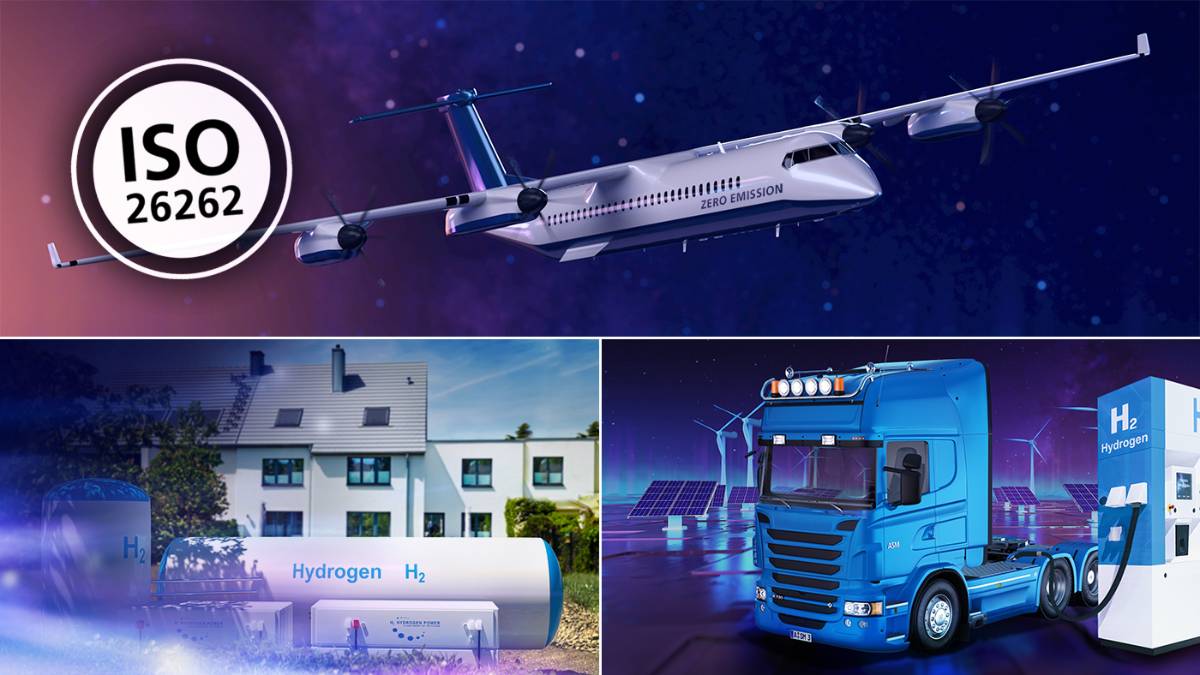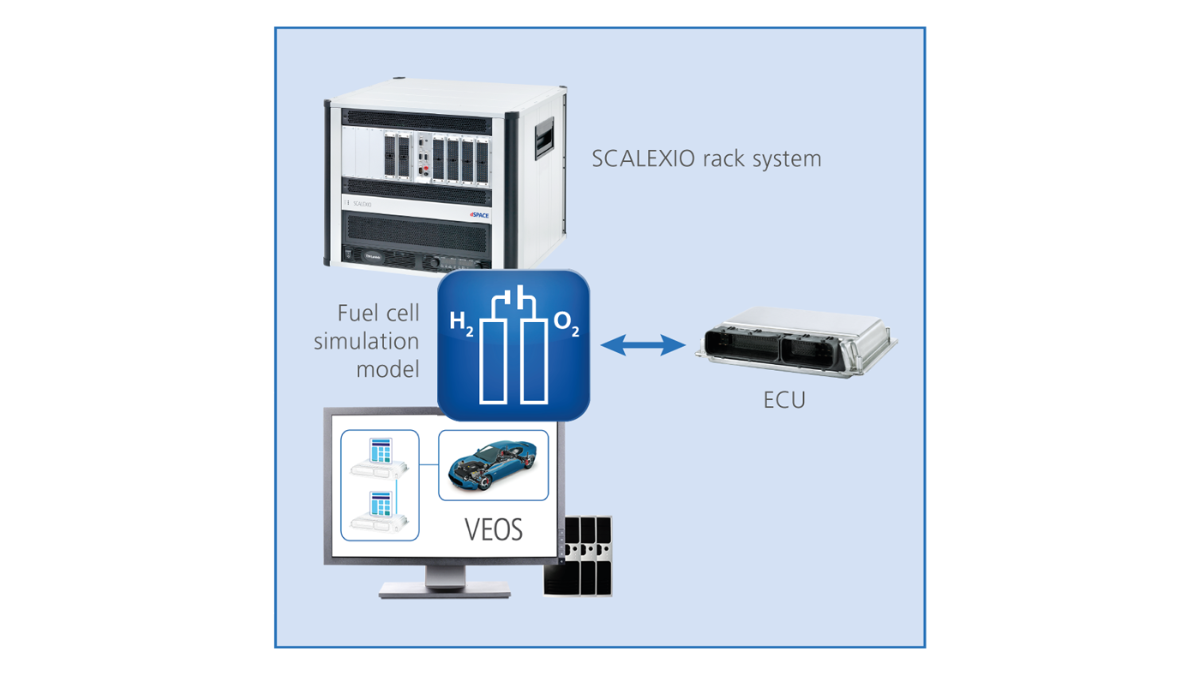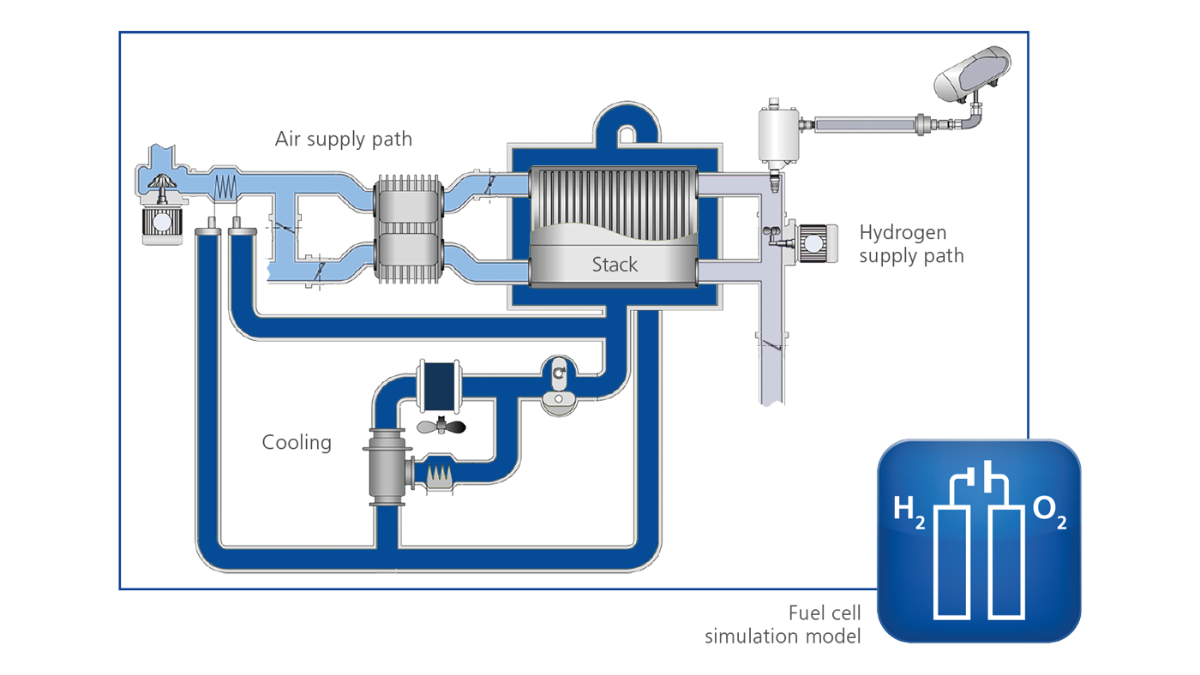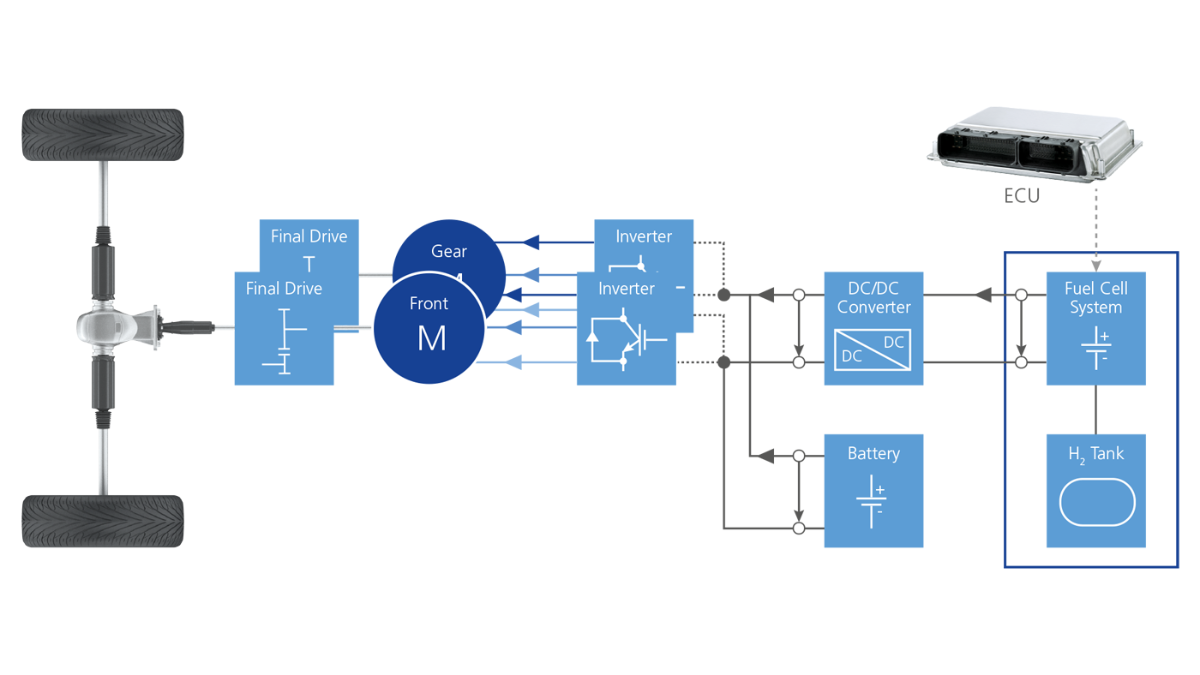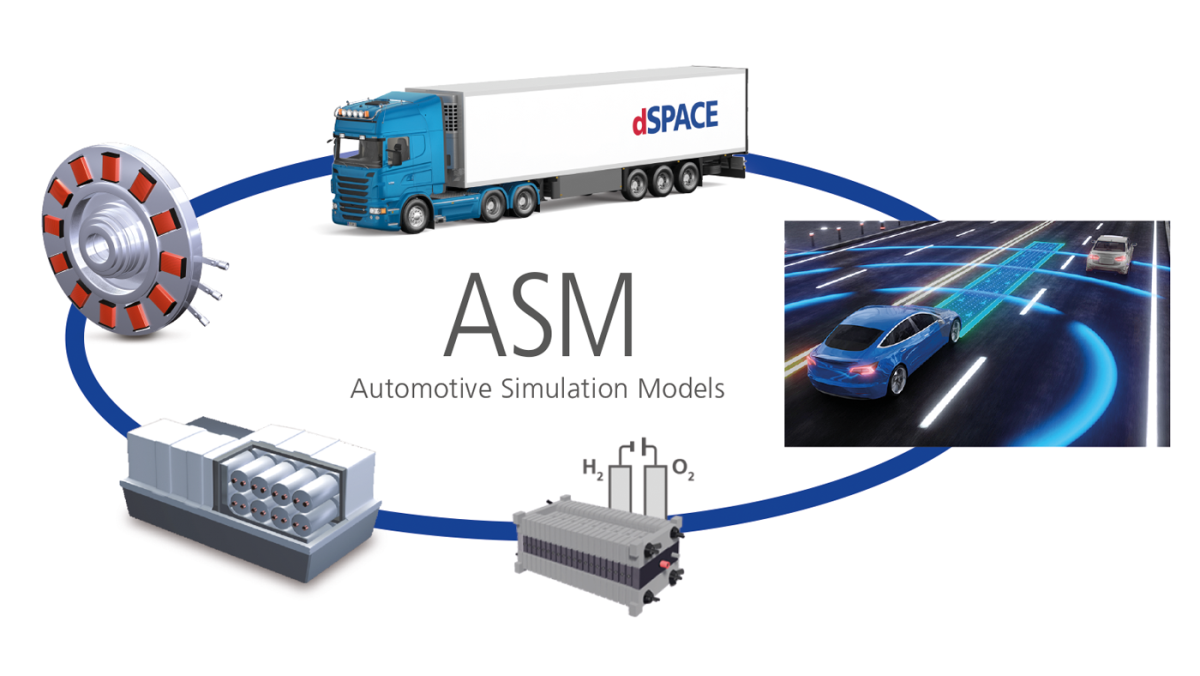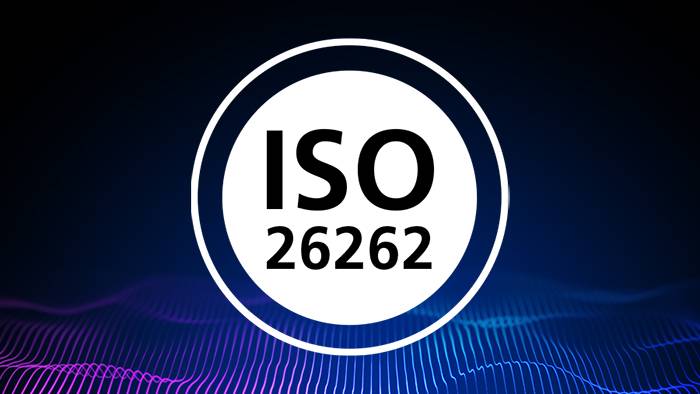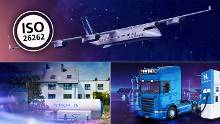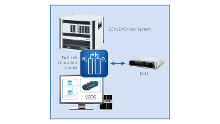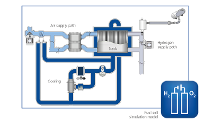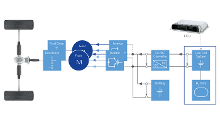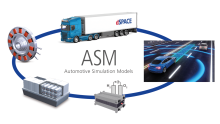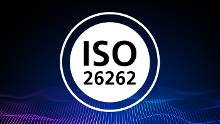ASM Fuel Cell
Simulating a fuel cell system
ASM Fuel Cell is a model library for the real-time simulation of a proton exchange membrane (PEM) fuel cell system and makes it possible to set up a realistic test environment for the ECU under test.
- Open MATLAB®/Simulink® fuel cell model
- For ECU testing and function development
- Intuitive graphical parameterization in ModelDesk
- Ready-to-use demo project
Application Areas
Fuel cells are becoming increasingly important, particularly in commercial vehicles, but also for stationary and aerospace applications. A typical cell system consists of an air supply path (connected to the cathode of the fuel cell), a hydrogen supply path (connected to the anode of the fuel cell), and a cooling circuit. The fuel cell system and its individual subsystems are controlled by ECUs that have to pass extensive tests before they can be introduced to the market.
One of the most widely used systems for mobile applications is the proton exchange membrane (PEM) fuel cell system, which is what the ASM Fuel Cell model library is for. ASM Fuel Cell makes it possible to set up a realistic test environment for the ECU under test, no matter whether it is used in a classic HIL or SIL case with the controller only, in a setup where the complete system or a subset of components has to be replicated, or even in a complete virtual system, i.e., virtual vehicle or aerospace application tests.
Key Benefits
ASM Fuel Cell is shipped with a ready-to-use demo for a fuel cell electric vehicle (FCEV), where the PEM fuel cell system is a main component of the powertrain. The demo is designed to be used in a longitudinal powertrain setup for rear-, front-, or all-wheel drives or optionally without a powertrain where only the electrical system is the focus, i.e., for testbench or aerospace applications. It also lets you simulate the surrounding electrical infrastructure, such as battery and motor, as well as the electrochemical reactions within the fuel cell stack, the air and hydrogen supply, the tank system, and the cooling system. The performance of the fuel cell system is evaluated on the basis of the existing loss phenomena, including activation, ohmic, and concentration losses. The transport phenomena and the reaction mechanisms of the different gas types as well as water management are considered as well. You can use a network of soft ECUs to control the vehicle and successively replace them with controllers under test. The fuel cell simulation model can be adapted to any customer application and parameterized accordingly.
ASM Fuel Cell is fully integrated into the ASM tool suite. This makes the model scalable for any application area – from component tests to complete system tests and from passenger cars, trucks, and buses to aerospace applications.
Success Stories
Hyzon Motors: Developing and validating fuel cell technologies for commercial vehicles
Energy from the CellShanghai Fuel Cell Vehicle Power System: Efficient development and validation of controller software for a fuel cell in commercial vehicles
| Model Components |
|---|
|
- Fuel Cell Simulation Learn about our experience in test systems for fuel cell control units in the recording of our Innovation Coffee Break demo (September 14, 2020)
- Fuel Cell Modeling and Simulation Recording of online workshop (October 22, 2020)
- ASM Fuel Cells In this podcast episode, dSPACE presents a solution for testing the control algorithms behind fuel cell systems.
Drive innovation forward. Always on the pulse of technology development.
Subscribe to our expert knowledge. Learn from our successful project examples. Keep up to date on simulation and validation. Subscribe to/manage dSPACE direct and aerospace & defense now.

